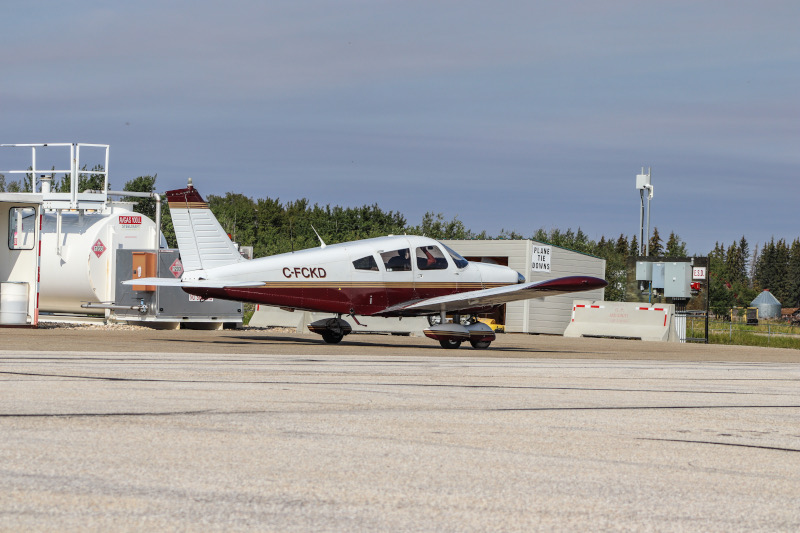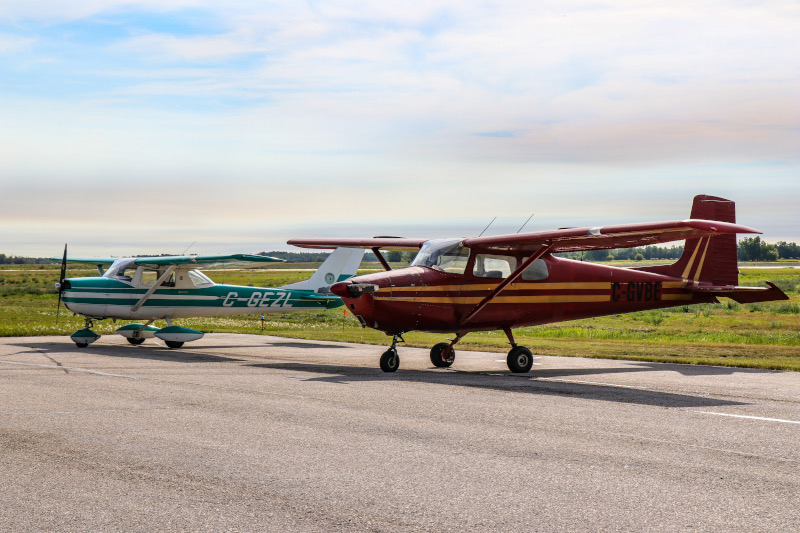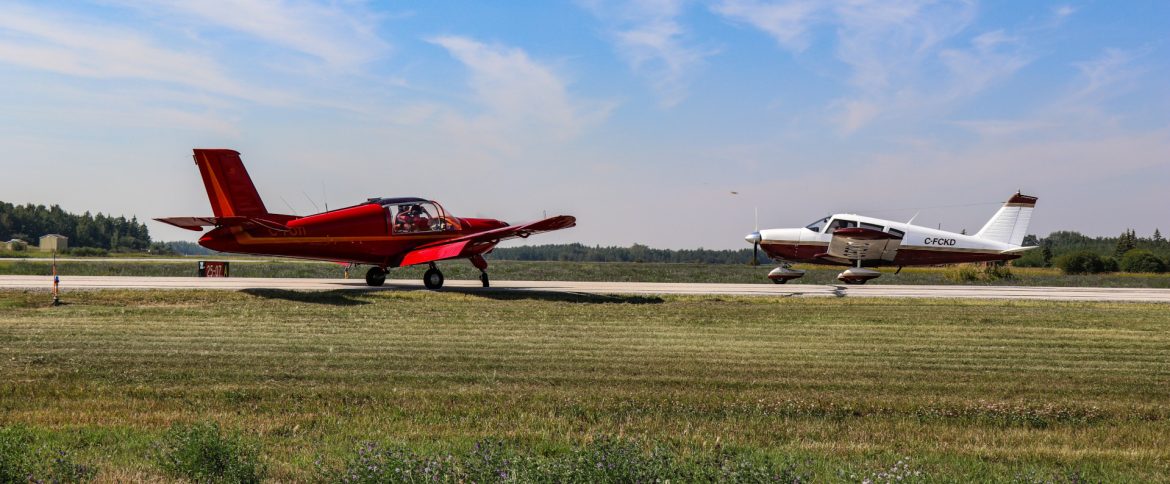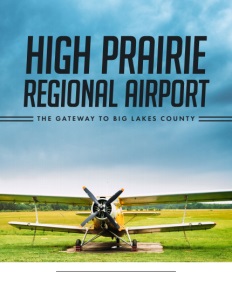High Prairie Regional Airport
The Gateway to Big Lakes County
Superb Management and Automated Services Propel Alberta Aviation
For residents of High Prairie, Alberta the skies are looking clear with an airport that is both dynamic and provides the perfect gateway to a thriving region.
High Prairie Regional Airport has become a vital cornerstone to the Big Lakes County region, as its leaders have been busy fostering partnerships, investing in cutting-edge infrastructure, and enhancing customer experience through digital innovations and streamlined processes.
The airport’s management bears a meticulous focus on daily operations, ensuring top-notch safety protocols and exemplary customer service.
Additionally, effective maintenance of facilities and timely upgrades have helped immensely with accommodating the airport’s growing needs.
The synergy of high-level strategic planning and ground-level operational efficiency creates a robust framework for success at High Prairie.
By aligning these elements, the airport not only expands its capacity and reach but also establishes itself as a key player in regional development.
High Prairie Regional Airport stands as a testament to effective community collaboration and strategic investment. The airport is showing that despite its modest size its impact extends far beyond the High Prairie horizon.
It continues to achieve its ultimate vision of success as a bustling, modern gateway where pilots and passengers enjoy a seamless travel experience, airlines find value in convenient fuel services, and the community benefits from enhanced connectivity and economic vitality.
By focusing on technological advancements, efficient operations, and community engagement, the airport continues to serve as a critical hub for the region, ensuring connectivity and safety for all its users.
A Community-Centric Aviation Hub
The High Prairie Regional Airport has been a pivotal asset for both Big Lakes County and the town of High Prairie.
Originally a collaborative venture between Big Lakes County and the town of High Prairie, the airport’s story reflects its evolving role and the significant investments made to enhance its utility and service.
With a pivotal shift in operations around 2010-2012, the county assumed responsibility from the town, recognizing that the airport’s strategic location and operational viability were better managed at the county level.
This transition marked the beginning of a new chapter focused on modernization and community service. This shift allowed the county to spearhead several enhancements to make the facility more user-friendly and capable of meeting the community’s evolving needs.
“We’ve upgraded the Terminal to make it a little more accommodating for anybody coming and going. We’ve upgraded our fuel purchasing systems. So, we’ve got on-site fuel available, all anybody needs is a credit card,” Says Reeve of Big Lakes County Tyler Airth.
Significant investments have been made in the airport’s infrastructure, including the installation of an automated fuel purchasing system. This modern setup allows users to refuel their aircraft with ease, using a credit card much like a regular gas station.
The airport offers both jet fuel and aviation gasoline (AV gas), which has greatly streamlined operations for various types of aircraft.
These upgrades come as a complement to a past project the airport underwent to rebuild and extend its runway, which now measures 4,332 feet long and 75 feet wide.
This expansion has not only improved the runway’s capacity but also enhanced safety and operational efficiency. The apron and taxiways were also resurfaced with fresh asphalt, ensuring that the airport can accommodate a range of aircraft sizes and types.
Overall, this overhaul reflects the airport’s commitment to creating a welcoming environment for all travelers.

The Local Impact of the Airport Operation
While the High Prairie Regional Airport serves a diverse range of users. It has space on its apron for 15 to 20 planes, which is frequently utilized by private jets and other aircraft, particularly for hunting expeditions and other seasonal activities.
Despite the range of travelers, the airport makes sure to give priority to one primary function over all others.
“We track flights and our number one use is medevac to the area. That is our priority and that has priority over anything else,” Airth explains, emphasizing how essential that medevac service is to a rural community like High Prairie.
The airport’s role in emergency medical evacuations has been crucial to the local community, as it has gained access to a critical service that often outweighs others in importance.
The airport’s operational capacity includes a privately owned hangar leased from the county, which can house up to five helicopters or two to three planes, depending on their size.
Plans are in place to construct a second hangar to support a local crop dusting company, which has expressed a need for additional space due to its expanding fleet.
Relative to the impact of other upgrades and projects, the introduction of self-serve fuel stations has been the biggest game-changer for the airport.
The automated fueling system increases the airport’s overall attractiveness to transient pilots which has significantly boosted traffic and operational efficiency, enabling pilots to refuel quickly and continue their journeys without delay.
Technological integration at High Prairie Regional Airport has played a crucial role in enhancing its operational capabilities. The recently implemented unmanned fuel service system reflects a broader trend in aviation towards greater automation and convenience.
Additionally, the airport has upgraded its Automated Weather Observing System (AWOS), which provides real-time weather updates for pilots. This system is crucial for flight planning and safety, allowing pilots to access accurate weather information either online or via radio.
Plans include installing cameras that provide live views of the runway, enabling pilots to assess conditions before departure. This innovation is particularly valuable given the region’s unpredictable weather patterns, including strong winds and blowing snow.
With so many moving parts, the airport’s largest task to undertake is undoubtedly maintaining the airport’s overall condition. Fortunately, having consistently well-kept conditions is something that High Prairie is well-known for, making it a fan favorite amongst pilots.
“It’s very rewarding to have pilots come in and say that they’re just happy to come here because they can see that the maintenance has been done and performed well,” Airth says, emphasizing that as the airport plans its expansions pilot feedback is one of its main considerations.

A Culture of Engagement and Partnership
The culture at High Prairie Regional Airport is deeply rooted in community values and a commitment to exceptional service.
That culture has been largely preserved by Mel Beaudette, the airport manager, who has been widely recognized for his dedication and the high standards he maintains.
His hands-on approach to airport management has earned praise from pilots and other users, who appreciate the clean and well-maintained facilities.
“We’ve got a great airport manager who doesn’t actually rely on a lot… as a small terminal, we are limited to what we can do, and Mel has done a fantastic job with limited resources,” Airth states.
When promoting itself, the airport’s biggest differentiator is obviously its fueling service, however the airport often involves the community in promoting aviation in general.
The airport hosts an annual Fly-In Barbecue every September, which has become a popular event among pilots and aviation enthusiasts. This community gathering not only showcases the airport’s amenities but also fosters a sense of camaraderie among the aviation community.
The event attracts 10 to 30 planes each year, and this year’s barbecue is expected to feature a special display by the Alberta Wildfire Forestry teams, highlighting their firefighting equipment and operations.
High Prairie Regional Airport’s operational structure also includes collaborative partnerships with the town of High Prairie and various vendors.
The airport’s relationship with medical evacuation services, such as STARS Helicopter, is a key component of its operations, reflecting its critical role in emergency healthcare.
Additionally, its high community engagement has attracted the attention of a local flying club that is considering High Prairie for a potential operational stop.
“Alberta Air Tours, they’re talking about bringing 30 to 40 aircraft just to stop by for lunch… this would be just one stop out of only three places that they’re going to go in Alberta, which is awesome to see,” says Chief Administrative Officer David Reynolds.
Looking ahead, the airport is planning further expansions to address the growing demand for space and services. These include expanding the apron to accommodate more aircraft and potentially extending the runway further to support larger planes and additional emergency services.
The focus on infrastructure development is aimed at enhancing the airport’s capacity to serve both local and regional needs effectively.
High Prairie Regional Airport embodies the spirit of community collaboration and progressive development. Through its ongoing investments in infrastructure, technology, and community engagement, the airport continues to serve as a vital hub for both emergency services and recreational aviation.
Its commitment to maintaining high standards of service and safety, combined with its strategic plans for future growth, ensures that the airport will remain a cornerstone of the region’s aviation landscape for years to come.
AT A GLANCE
High Prairie Regional Airport
What: A pivotal aviation hub in Big Lakes County, Alberta, demonstrating exceptional management and the integration of automated services.
Where: High Prairie, Alberta, Canada,
PREFERRED VENDORS
Big Lakes County Council – https://biglakescounty.ca/
Big Lakes County offers a perfect mix of natural beauty, industrial growth, and strong community spirit. With opportunities in agriculture, manufacturing, and technology, businesses thrive alongside outdoor adventures and a welcoming community. It’s a place to build careers, enjoy nature, and be part of something special!



